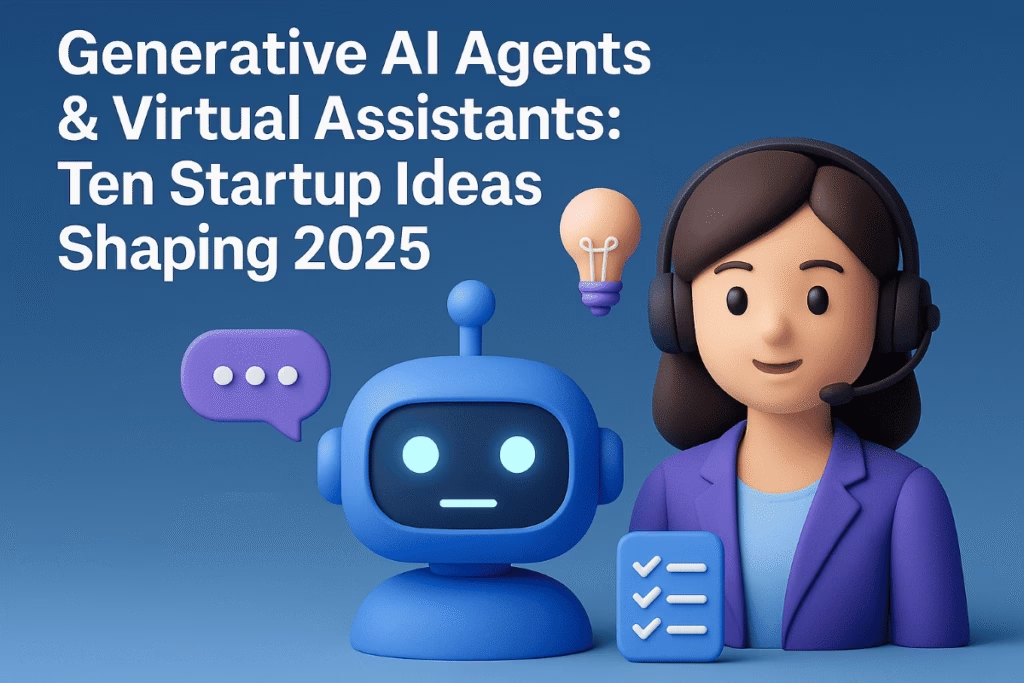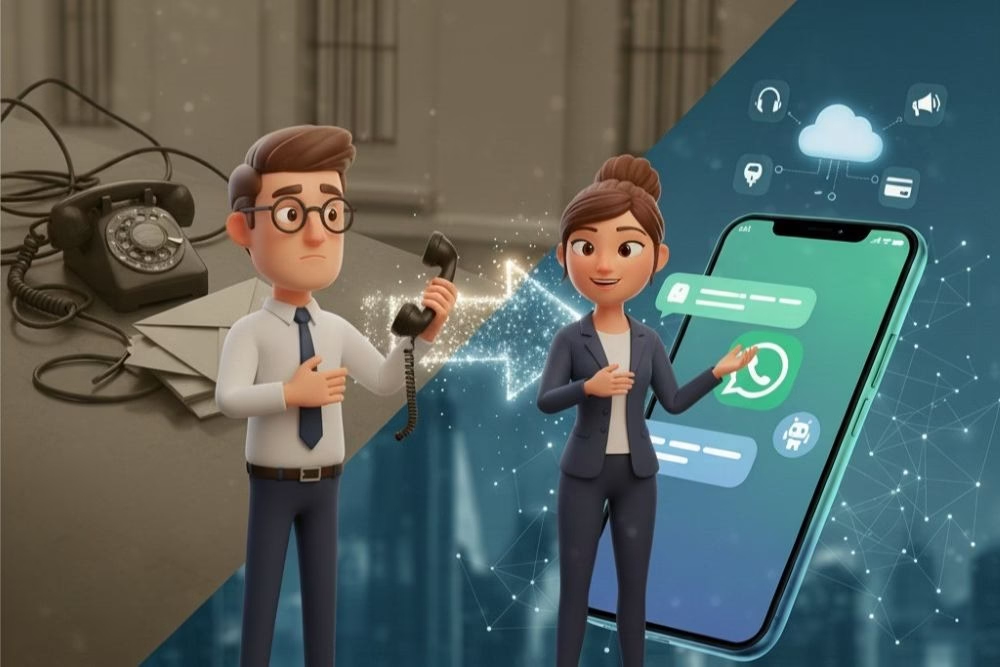In 2025, generative AI agents are no longer just a sci-fi fantasy or a beta feature buried inside productivity tools—they’re forming the backbone of the next startup wave.
Startups like TinyFish are raising $47 million to build autonomous web agents that mimic human behavior. Meanwhile, Zoom’s AI receptionist answers business calls around the clock. From enterprise finance to voice-first tools for emerging markets, generative AI agents are moving from novelty to necessity.
What sets them apart? Unlike traditional chatbots that react to user prompts, these agents proactively execute multi-step tasks. They’re not just talking—they’re doing.
The Rise of Generative AI Agents in 2025
From Chatbots to Cognitive Agents
The early days of AI gave us chatbots that could answer questions and maybe help navigate a help center. Today, we’re entering the age of cognitive agents—autonomous systems that can reason, make decisions, and take real-world actions.
Tools like Manus AI show what’s possible when you combine large language models with planning and execution engines. These agents aren’t limited to chat—they’re working behind the scenes to scrape data, schedule meetings, or generate fully built workflows.
Why Enterprises Are All-In on Autonomy
Corporations like Amazon, Moody’s, and Johnson & Johnson are already deploying multi-agent systems. In healthcare, agents accelerate drug discovery; in finance, they run deep analyses without analyst input. Zoom and eBay are integrating these tools to handle HR tasks, customer service, and even code reviews.
Why the surge? It’s about efficiency at scale. AI agents don’t sleep, don’t miss context, and can be customized faster than any traditional SaaS platform.
Funding and Market Outlook for AI Agent Startups
Investors are backing this wave hard. Over $3.5 billion has already flowed into agentic AI startups globally in 2025 alone. Major players like Gradient Labs, Sarvam AI, and Trupeer are attracting capital by solving focused, high-friction problems using agent tech.
By 2030, the generative agent market is expected to exceed $50 billion—spanning customer service, financial ops, content creation, and multilingual market expansion.
10 AI Startup Ideas Redefining SaaS and Beyond
The real power of generative AI agents lies in how they unlock new business models. Whether you’re a solo founder or scaling a SaaS company, here are ten startup ideas that are not only viable in 2025—but already attracting users and capital.
1. Autonomous Web Browsing Agents
Inspired by TinyFish, these agents simulate a user browsing the web—scanning prices, analyzing trends, or scraping inventory data in real-time.
Use case: eCommerce price trackers, market researchers, or legal document monitors.
2. Virtual Receptionists for SMBs
Zoom’s AI Phone Agent paved the way. These bots answer calls, book appointments, answer FAQs, and triage leads—all without human intervention.
Use case: Dentists, clinics, law firms, and solo consultants.
3. Finance & Regulatory Automation Agents
Platforms like Otto by Gradient Labs automate compliance workflows and internal audits. This is especially valuable in finance, healthcare, and legal SaaS.
Use case: Fintech and insurtech startups needing built-in regulatory intelligence.
4. AI Video & Documentation Creators
Trupeer allows users to instantly generate product videos, explainers, translations, and multilingual documentation.
Use case: SaaS onboarding, product marketing, customer success content.
5. Localized Multilingual Assistants
Kruti and Sarvam AI show that there’s massive demand for agents that speak regional languages.
Use case: AI agents for retail, logistics, or food delivery in non-English-speaking markets.
6. ERP + Finance Task Executors
Agentic tools like FinRobot connect to your ERP or CRM and autonomously generate budgets, process reimbursements, or trigger alerts.
Use case: Mid-market businesses in manufacturing, logistics, or accounting.
7. Voice-First AI for Emerging Markets
Dukawalla is a voice-based agent that gives business insights to African SMEs. Think of it as an AI business coach—without an app, just via voice.
Use case: Retailers, farmers, and solo entrepreneurs with low-tech environments.
8. Multi-Use General Agent Platforms
Inspired by Manus, these general-purpose platforms allow plug-and-play AI agents for HR, marketing, logistics, and more.
Use case: SaaS startups building industry-agnostic, modular tools.
9. Avatar-Powered E-commerce Helpers
China is leading this trend—AI characters guide users through shopping experiences with dynamic style suggestions and upselling.
Use case: Shopify plugins, DTC fashion brands, luxury eCommerce.
10. Creative + Branding Assistant Agents
Companies like Amazon and LVMH are testing agents that generate campaign briefs, taglines, and product launches. These tools use customer data to create hyper-targeted content.
Use case: Branding agencies, in-house creative teams, solo marketers.
What Founders Need to Know Before Building
The startup opportunities are huge—but so are the risks if you don’t understand the landscape. Before you dive into building your first (or next) generative AI agent, here are three essentials to consider.
Tech Stack Essentials for Agentic AI
Building an agent isn’t just about slapping ChatGPT on top of a user interface. You’ll need:
- LLM Orchestration Tools: LangChain, Semantic Kernel, or custom logic flows.
- Vector Databases: Like Pinecone or Weaviate for storing context and memory.
- Planning Engines: Tools like CrewAI, AutoGen, or custom planners to manage multi-step actions.
- Execution Layer: APIs, UI interaction (e.g. Puppeteer, Playwright), and RPA-like automation.
Pick your stack based on your audience—consumer tools need speed and polish, enterprise tools need security and integration depth.
Ethical Considerations and Guardrails
Agentic AI systems can take actions in the real world. That means:
- Clear audit trails must be built in
- User override controls should be standard
- Bias, hallucination, and safety filters need to be front and center
Think of your agents as employees—if you wouldn’t trust them without a supervisor, they’re not ready for users.
Distribution Channels and GTM for AI Tools
Many agentic startups fail not because of the tech—but because they can’t find users. Here’s how to get traction:
- Build for one job-to-be-done first: Don’t try to be the “everything agent.”
- Plug into existing workflows: CRM plugins, Slack bots, browser extensions.
- Target verticals with high automation value: Law, finance, logistics, healthcare.
If your agent replaces a $40/hr human task with a $10/month product, you’re in the right lane.
Final Thoughts
Generative AI agents are not just a trend—they’re a tectonic shift in how software gets built and used.
The move from reactive chatbots to autonomous, multi-step agents is creating an entirely new category of SaaS. One where software doesn’t just respond—it acts. Startups are already proving what’s possible, from TinyFish’s data agents to Kruti’s vernacular virtual assistants.
If you’re a founder, the timing couldn’t be better. The infrastructure is mature. The market is curious. And the use cases—especially in underserved verticals and non-English-speaking regions—are ripe for disruption.
But remember: don’t just chase hype. Build agents that solve real-world problems, with safety, focus, and user value at the core.
FAQs
1. What is a generative AI agent?
A generative AI agent is a system that uses large language models to perform multi-step tasks autonomously, such as browsing the web, responding to emails, or managing workflows—without needing human input for every step.
2. How are generative AI agents different from chatbots?
Unlike chatbots, which only respond to user prompts, generative AI agents can plan, reason, and take real-world actions like scheduling meetings, analyzing data, or updating records.
3. What are the best startup ideas using AI agents in 2025?
Top ideas include web browsing bots, virtual receptionists, finance workflow agents, multilingual assistants, and avatar-powered eCommerce tools.
4. Can small businesses use generative AI agents?
Yes, many AI agents are designed for small businesses—handling customer support, booking, content creation, and even local-language interactions.
5. What tech stack is used to build AI agents?
You’ll typically need an LLM orchestration tool (like LangChain), a vector database (e.g., Pinecone), a planning engine (like AutoGen), and API integration capabilities.


